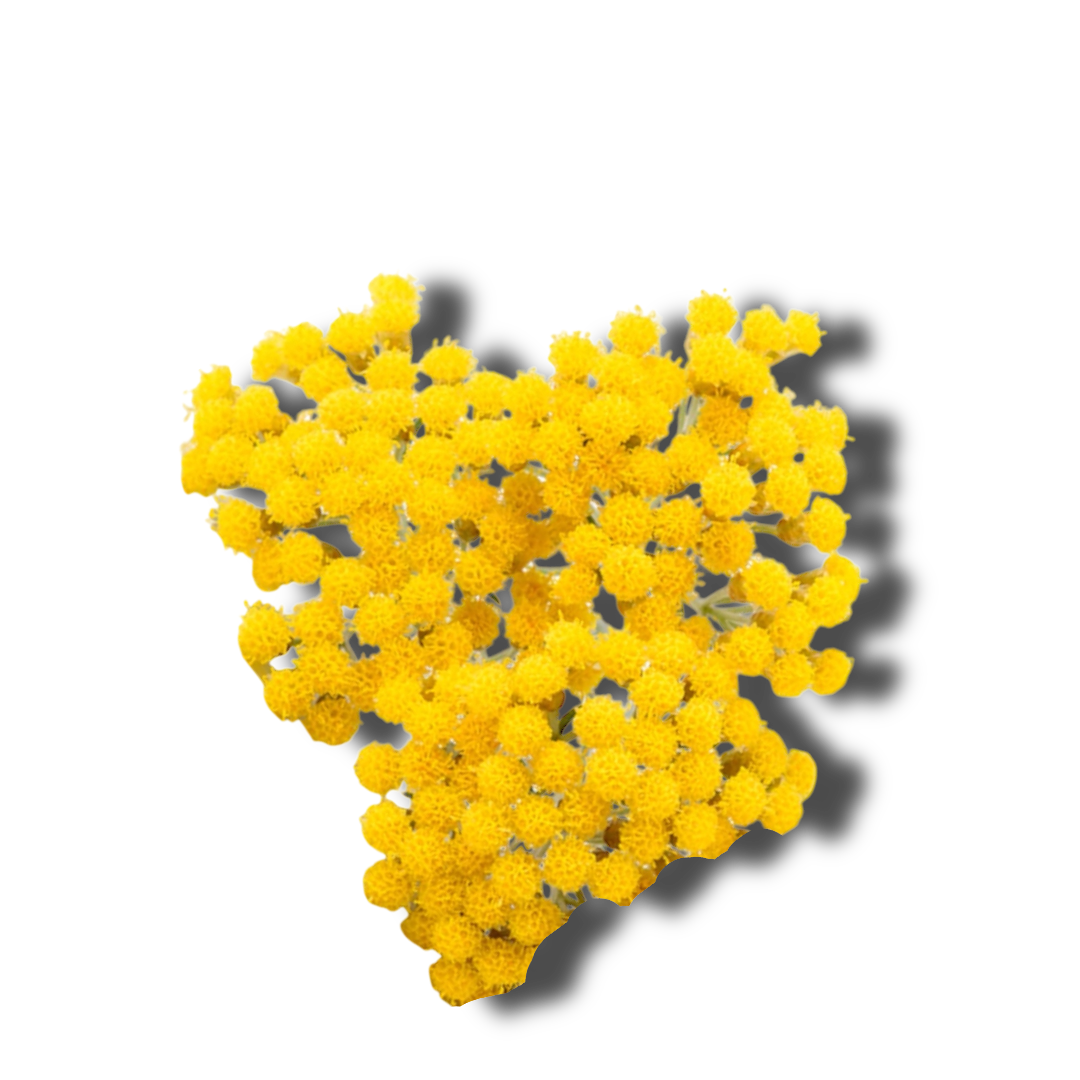Helichrysum essential oil, often derived from the flowers of Helichrysum italicum, is a highly prized oil in aromatherapy and natural medicine. Known for its sweet, earthy scent with hints of honey and tea, this oil is commonly referred to as “immortelle” or “everlasting” due to the flower's long-lasting blooms and preservative properties. Its composition includes compounds such as neryl acetate, alpha-pinene, and italidione, which contribute to its unique therapeutic effects. The oil is extracted through steam distillation of the flower heads and is typically golden yellow in color.
One of the most celebrated uses of Helichrysum essential oil is its skin-healing properties. It is widely used in skincare formulations to promote the appearance of healthy skin, reduce redness, and help soothe irritation. Due to its anti-inflammatory and regenerative properties, it is often applied topically (usually diluted in a carrier oil) to help heal wounds, bruises, scars, and even stretch marks. Many people incorporate it into their daily facial routines to address issues like aging skin and uneven tone, as it is believed to support collagen production and improve skin elasticity.
Beyond skincare, Helichrysum essential oil is valued for its pain-relieving and emotional balancing effects. It is commonly used in massage therapy to relieve muscular tension, joint discomfort, and nerve pain, thanks to its natural analgesic and anti-spasmodic properties. Aromatically, it is used to reduce stress, ease emotional trauma, and promote a sense of calm and well-being. In traditional medicine, it has also been used to support liver health, detoxification, and respiratory function. As with all essential oils, it’s important to use Helichrysum oil responsibly, with proper dilution and awareness of individual sensitivities.

